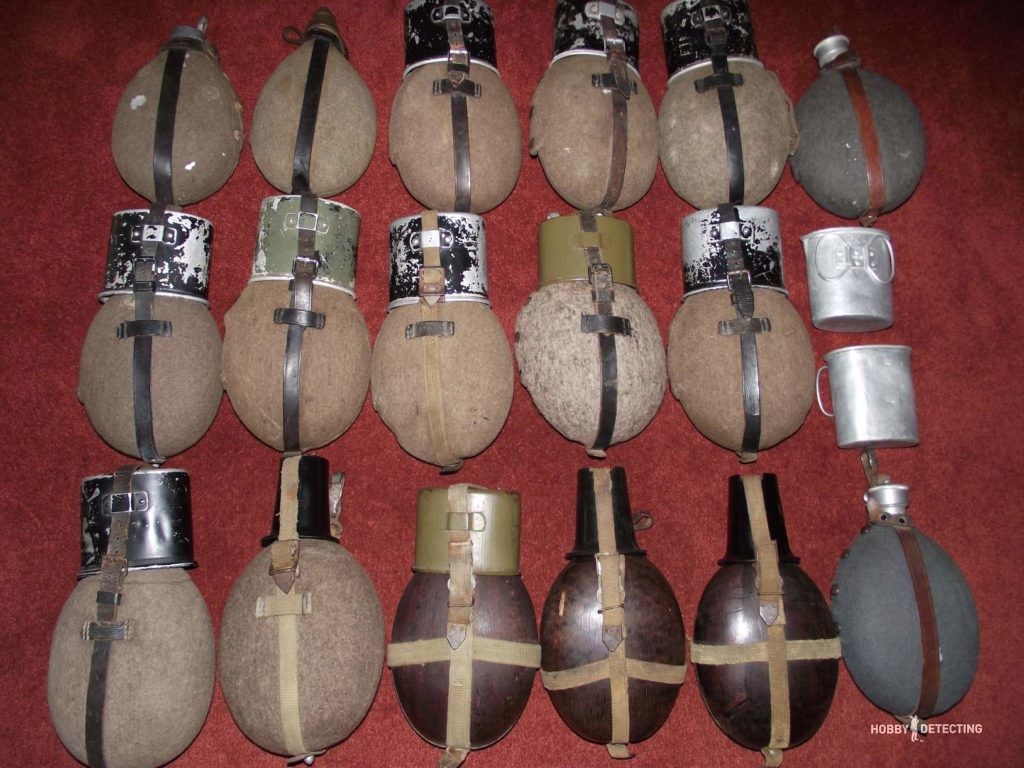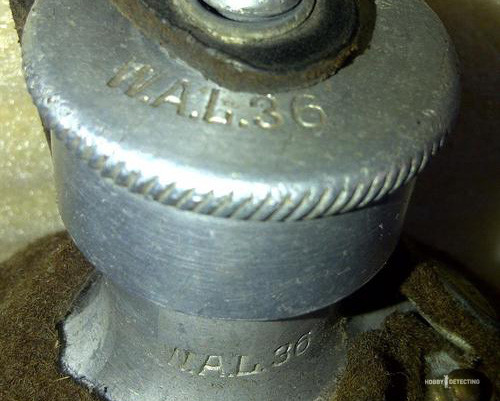German flask of the 1931 model (identification of finds)
On war mines, one of the most common finds is German field flasks. Next we will talk about the most common variant of field flasks of the Nazi troops during the Second World War.

Of the many options for German-made field flasks that may come across when searching at battlefields, we can single out the standard model at the beginning of the war. This model, or rather the 1931 model, in German «Feldflasche 1931» was in use in all theaters of the war from the very beginning to the end in May 1945.
A standard German flask of the 1931 model has a volume of 0.8 liters, consists of an aluminum container, a lid and a glass with folding wire handles, also made of aluminum. A cloth cover was put on the flask of the flask, which served as a kind of thermos, i.e. delayed the cooling or heating of the liquid. A strap with a rectangular buckle and a carabiner was threaded around the case to secure the flask to the cracker bag.

The flask in its original form and configuration had the designations of the manufacturer — letter code and year of manufacture. This marking was embossed on the neck of the flask, lid and glass. In addition, the same markings, but in ink, were written on the inside of the case, on the ribbon running along the edge in the area of the buttons, and also on the back of the strap. In the photo below there are stamps on the neck and lid of the flask.

In forests and fields such a flask is often found in a completely unsightly form — all riddled with shrapnel and riddled with bullets. Add to all this the cavities from aluminum oxidation. However, there are cases where such items of equipment are recovered in good condition, suitable for their intended use. These are «sausages» often found in forests. Traces of nearby detonation are evident.

In former German-occupied areas, it is not uncommon to find such flasks in village attics or in the basements of houses. Former guests could have forgotten them in the house, just as rural people picked up abandoned equipment to use on the farm. Attic flasks are much better preserved, although the cover is mercilessly eaten by moths.
Read next about what may be under your reel…
